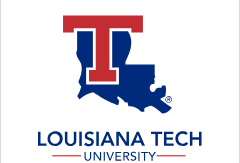Document Type
Poster Presentation
Loading...
Location
Online
Description
Blue crabs are keystone consumers and scavengers in estuarine ecosystems. The distribution of these important consumers in shallow habitats may be affected by predation from wading birds, like herons. However, we have little information about how or if blue crabs respond to the presence of avian predators. Floating vegetation, like water hyacinth, may provide a refuge from wading birds in shallow habitats. Water hyacinth, an invasive freshwater plant that occupies marsh edges in low salinity marshes, and previous research found that high abundances of blue crabs were associated with this vegetation. Blue crabs may use the hair-like roots that are suspended in the water as a habitat to hide from predators. Here, we examined if blue crabs respond to visual cues of avian predators and increase their use of water hyacinth habitats by recording crab behavioral responses to heron decoys and pvc controls. Shallow water hyacinth habitats occupied by one blue crab were created in small pools. After a 30 minute acclimation period, a heron decoy or a pvc pipe was placed over the pool. We measured the amount of time spent in open and hyacinth habitats and the number of habitat transitions. Heron treatments did not significantly alter habitat use or the movement between habitats suggesting blue crabs do not respond to heron visual cues. Blue crabs may require movement rather than a visual cues alone to respond to avian predators. Future studies could be conducted to determine how movement, or differing bird predators may affect crabs to further understand how avian predators may affect the distribution of this keystone species.
Recommended Citation
West, Colton; Rieucau, Guillaume; Hinkie, David; and Hill, Jennifer, "18. Do Blue Crabs Respond to Visual Cues of Avian Predators?" (2021). Undergraduate Research Symposium. 11.
https://digitalcommons.latech.edu/undergraduate-research-symposium/2021/poster-presentations/11
West_poster - Colton West.pptx (8028 kB)
Poster - Colton West.pdf (583 kB)
18. Do Blue Crabs Respond to Visual Cues of Avian Predators?
Online
Blue crabs are keystone consumers and scavengers in estuarine ecosystems. The distribution of these important consumers in shallow habitats may be affected by predation from wading birds, like herons. However, we have little information about how or if blue crabs respond to the presence of avian predators. Floating vegetation, like water hyacinth, may provide a refuge from wading birds in shallow habitats. Water hyacinth, an invasive freshwater plant that occupies marsh edges in low salinity marshes, and previous research found that high abundances of blue crabs were associated with this vegetation. Blue crabs may use the hair-like roots that are suspended in the water as a habitat to hide from predators. Here, we examined if blue crabs respond to visual cues of avian predators and increase their use of water hyacinth habitats by recording crab behavioral responses to heron decoys and pvc controls. Shallow water hyacinth habitats occupied by one blue crab were created in small pools. After a 30 minute acclimation period, a heron decoy or a pvc pipe was placed over the pool. We measured the amount of time spent in open and hyacinth habitats and the number of habitat transitions. Heron treatments did not significantly alter habitat use or the movement between habitats suggesting blue crabs do not respond to heron visual cues. Blue crabs may require movement rather than a visual cues alone to respond to avian predators. Future studies could be conducted to determine how movement, or differing bird predators may affect crabs to further understand how avian predators may affect the distribution of this keystone species.

